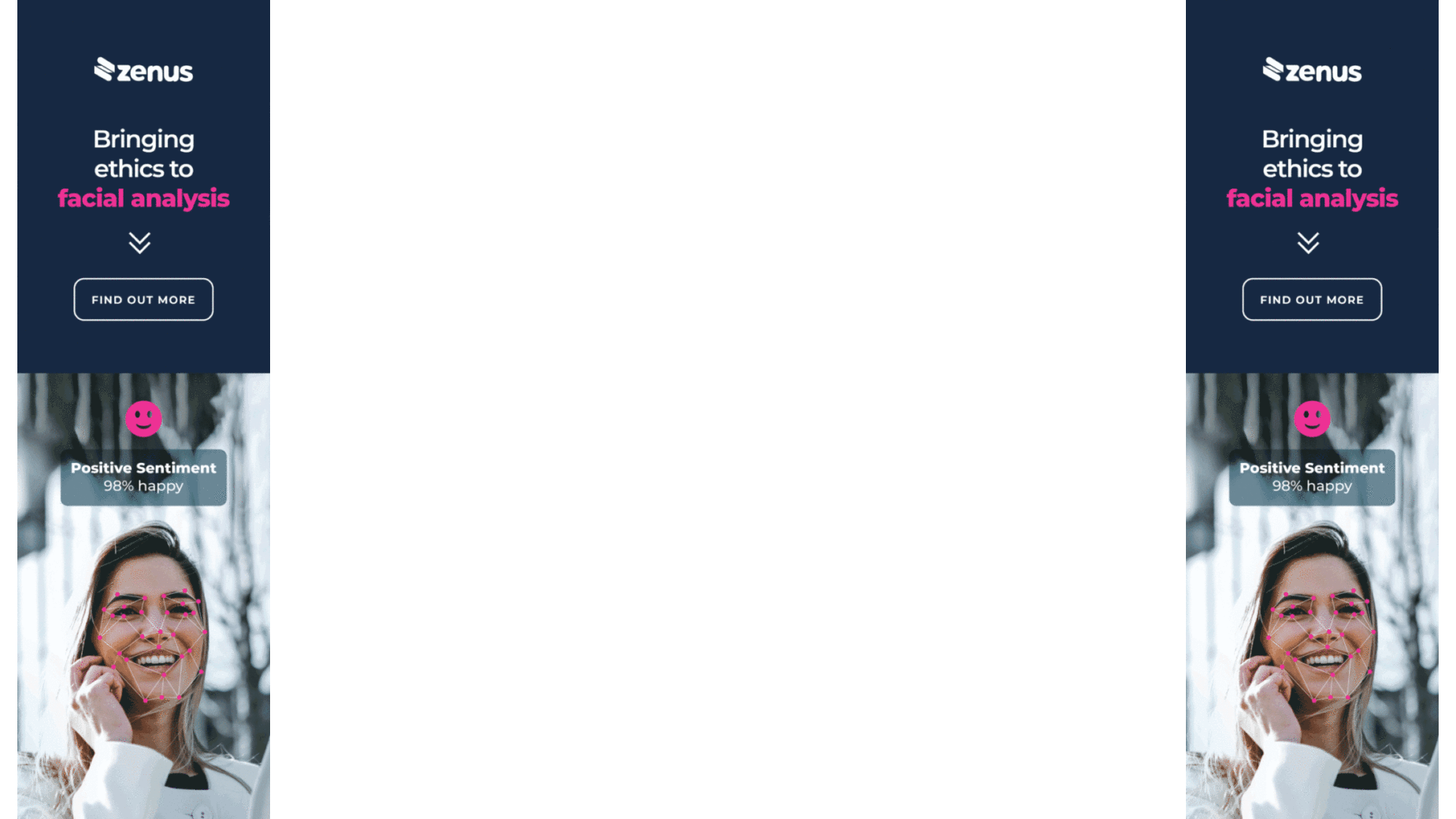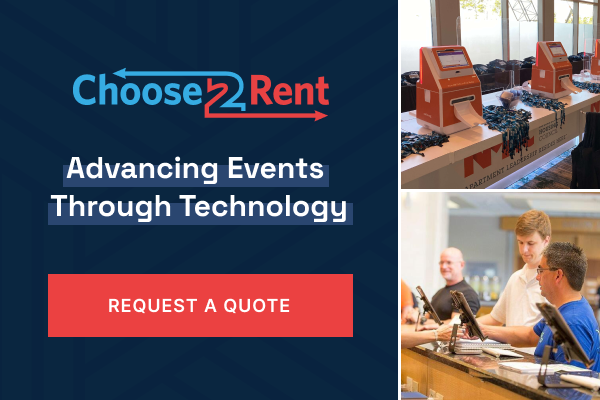CrowdComms’ MD, Matt Allen, hosted a workshop at the launch of Event Tech Live (ETL) US & Canada in June this year: What will Hybrid Events look like in the Future?
Across six short articles, starting below, CrowdComms details key takeaways from Matt Allen’s forum.
Look out for Matt’s session on day 1, Wednesday 3rd Nov, at Event Tech Live – London too. He will be sharing thoughts on the challenges of virtual event networking over the last 18 months and the means to overcome them.
A fully virtual show set to Central Standard Time, ETL US & Canada sessions pulled in audiences from both hemispheres and Matt’s was no exception.
A good turnout, the perfect split between organisers and tech providers, made for an engaging exercise in understanding the challenges of attendee networking at hybrid and virtual events from those two perspectives.
As the coronavirus pandemic stretched beyond optimists’ finish line – and kept stretching – events honed their virtual chops. In a significant number of cases that meant a far greater footprint of course. So, hybrid is the answer beyond the next few steep corners; it brings more of everything, albeit not necessarily cost, and it’s safer. But it begs some big questions too of course.
Introductions and housekeeping done, Matt Allen started at the top, asking where attendees felt the focus of hybrid would, or should, be – physical or virtual.
1. Best focus for hybrid
The consensus was, ideally, to treat the tribes equally, up to a point. Content is innately transferable and people can interact with it from anywhere without a noticeable extra spend from the organiser in terms of voting on topics, putting questions to speakers and so on.
The splitting point came with networking, the other bastion of the modern event module. Tech companies talked solutions while others stressed that, if they were at an event with people, remote networking could wait.
Equally, “I tend to focus more on the virtual audience,” one organiser said. “Only because we know what the live audience experience is going to be and we’re trying to present that experience to the virtual audience, which takes a fair bit more time.”
‘Networking’ can cover every conversation on the show floor. Trotted out on all trade show PR pieces since forever, it runs content pretty close on any organiser’s list of priorities. Post-pivot though, providing for ‘new networking’, which hooks in virtual visitors, is one of the biggest challenges for tech companies/platform providers as they look for a new means of facilitating those conversations, putting the I in hybrid, rather than trying to recreate the in-person patter.
2. Engagement

The second chapter from CrowdComms’ MD Matt Allen’s workshop, ‘What will Hybrid Events look like in the Future?’ – at the inaugural Event Tech Live US & Canada – considers what the audience saw as the particular issues in attending a remote event and what special moments were missed most by not being there physically.
Pretty much the uniform response here was “engagement”, again that ‘how to hook remote visitors better into the physical live event’ frame. In the short-term, at least, it’s about content – whether that moves on to engagement as well, as tech develops and delivers workable, affordable solutions, stays in the question pile.
“With any kind of event, content is number one,” Matt Allen said. “Organisers and technology providers need to keep in mind that a lot of the audience is going to stay virtual”, which may very well be simply about geography/travel cost, having tapped into the event during lockdown.
There was a sense too, for some, that people watching from home or the office, outside the event space, might not be so worried about interacting with other visitors and being ‘included’. They simply want to be able to engage in the content.
For the organiser though, and the tech contingent, gathering the data between the live audience and the virtual audience is crucial.
No event is the same of course. One organiser in the audience, who puts on networking events, brushed the content chatter aside. “Anything that we consider vital is available anywhere on the web, if you really need it,” he said. “The engagements that you make with your future partners and the memories that you build with those people are far more important, and far more long-lasting, than a titbit of technology.”
That highlights the fantastic diversity across the global event map, which is much more open to all now, a rare positive in the eye of the Covid-19 storm. Nobody is looking for a single solution.
“There are a lot of great things about being in-person and the ability to network, have a drink and eat some food, is critical,” Matt Allen said in response.
“We’re developing lots of integrations with food apps so people out of the physical footprint have equivalent food delivered. Not quite the same perhaps but it’s certainly getting there.”
3. Virtual Attendance
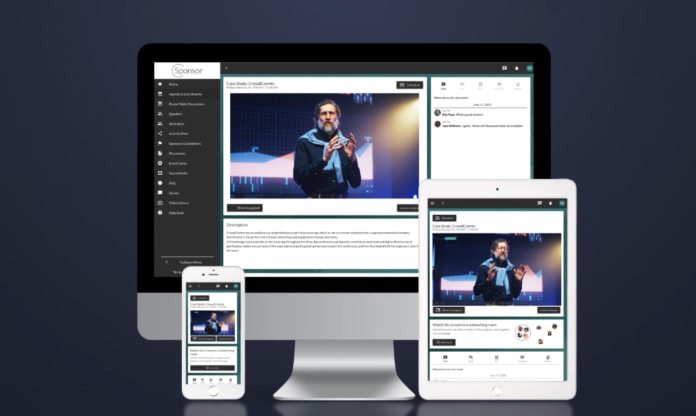
The third takeaway from the Matt Allen – CrowdComms’ MD – workshop at Event Tech Live US & Canada looked at the spoils of bigger audience numbers at virtual events, which operate outside bricks and mortar boundaries.
One CrowdComms’ client tripled the number of delegates attending their events post-pivot. And when they go back to a hybrid environment, the strategy will be to have a smaller number of people in-person charged a higher amount to attend.
“If we’re going to tap out on, say, 800 people for our in-person event, and we may have to change even that depending on venue challenges etc, we can have as many people as we want virtually,” Matt Allen said. “So, for example, our in-person event is 80 to a 100 dollars per person and the virtual ticket is 20 dollars.
“The virtual ticket also gets you a membership to the site so you can revisit and replay things. The live ticket does that too of course, but to keep people wanting to come in-person we’ve really got to throw stuff in to make it interesting, to increase the value.”
Examples of events in Australia, where Covid numbers have been very different, and in the States showed that people didn’t want to go in-person, post-March 2020 when the option to attend was there. Looking forward, again it comes down to the type of event
Does limiting numbers drive ticket prices up for future events? ‘Chris’ came straight back with “absolutely”.
“If I’m presenting, my live audience is there and my virtual audience can watch that same content, engaging in terms of Q&A or live polling, or surveys, or quizzes or gamification, it can be delivered in real time,” Matt Allen said. “That’s very easy to do.
“The challenging component of hybrid events is that delegate to exhibitor piece or that delegate to delegate piece, where you’ve got a mixture of virtual and remote audiences. That’s where we’re trying to come up with technology solutions.”
4. Driving Behaviour
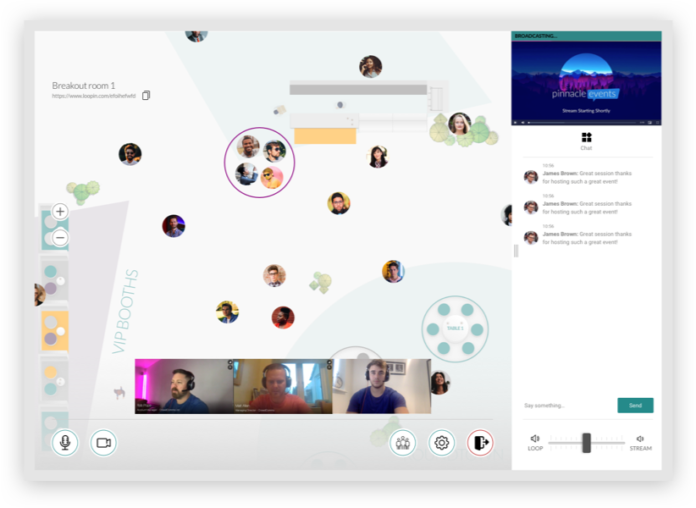
The fourth chapter of learnings from CrowdComms’ MD Matt Allen’s workshop at ETL US & Canada – What will Hybrid Events look like in the Future? – is all about driving delegate behaviour through apps/engagement/gaming.
In essence, organisers looking for a platform to serve their shows post-lockdown must be sure to look under the hood.
It has to be a system that can switch, simply, between in-person and remote audiences. Particularly important for anyone running a series looking for the same experience across the native app, which the pandemic pushed from almost ‘has been’ to absolute must-have, where they are set to stay, and desktop browsers – to give that crucial familiarity using the software.
A key element in driving revenue is delegates visiting virtual booths when they’re watching from home – and the analytics are easy.
“We know when someone’s clicked on a sponsor. We know when someone has facilitated a one-to-one encrypted video. We know when someone’s joined a networking lounge – because we track all that behaviour,” Matt Allen says.
“I do think gamification is going to underpin a lot of it, encouraging virtual attendees to go and maximise that sponsor opportunity, see those exhibitors, participate in the sessions and the networking.”
One delegate at the session presented a case study. “We have a meeting with five different businesses,” he said. “Traditionally, they come for one general session, one day, before we split them up. [Last year] we basically did the exact same thing but via Zoom because everything happened so quickly and we didn’t have the time to rethink it.
“We had seven Zoom rooms and we moved the companies around with a lot of things that kept them interactive. We did what we called ‘meaningful moments’, which was things from videos to drawing to learning to make cocktails to yoga and relaxation.
“All of that was happening throughout the programme in different places, then we sent them snack boxes. Everyone talked about how much food there was.
“Now we’re looking at our February meeting, which will be hybrid, probably 60 to 70 per cent of our attendees attending live. So, we’re planning a live event and we’re planning a virtual event.
“I think the in-person is going to be less engaged because it will be easier for them to jump on their phones, to walk around and forget to come back, all of those things that happen on site.
“As soon as administration opens, you’re asked to download the app. We communicate via the app, we do app challenges throughout, during the live programme as well. We actually used the app’s desktop experience as our landing page, so it will definitely help. It’s going to be interesting because people are so used to communicating virtually and meeting virtually.
“We all think ‘Oh it’s going to be great’ but there are sure to be some residual challenges from what they’ve experienced for the last year and a half. The approach is not necessarily different in terms of the technology though, if you’re using an app or the web.”
“You’ll have a native app version and that’s going to be the same log-in and the same platform that’s used for your remote audience,” Matt Allen said in response. “The idea is that they’re viewing the same agenda.
“From a gamification perspective, they can participate in the same challenges, they ask questions, you can give them points if they answer a quiz question right and it’s the same leader board for your virtual and your in-person audience.”
5. Support
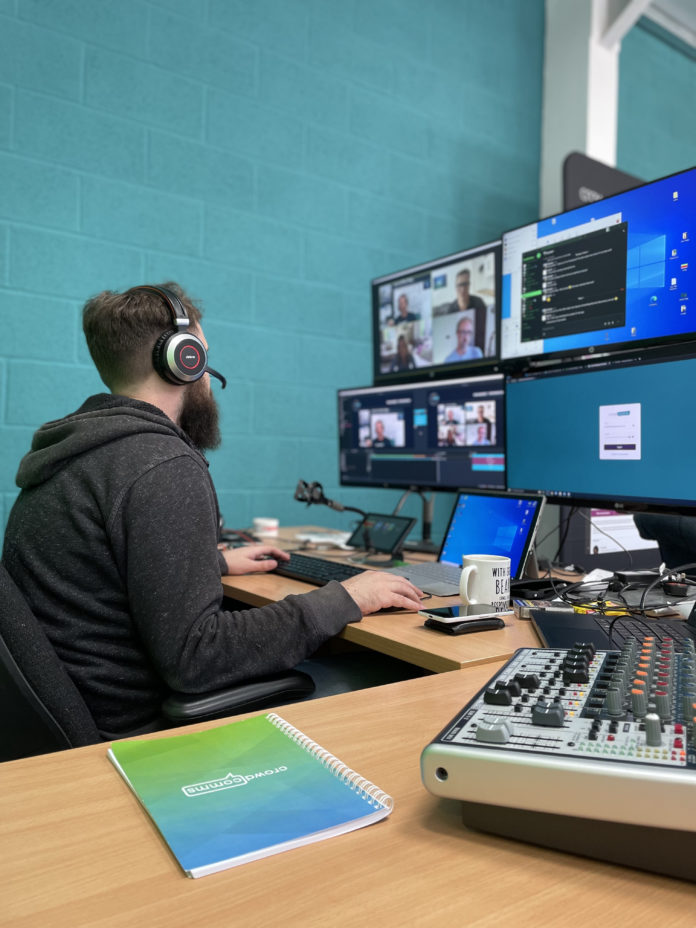
Next in the list of takeaways from CrowdComms’ MD, Matt Allen’s workshop at ETL US & Canada – What will Hybrid Events look like in the Future? – comes costs and staffing ‘differences’ between the requirements of the in-person and the digital elements.
“Questions to start with,” Matt Allen says, “is everybody working on everything together or are we siloing people out? How do you communicate that to your client who is saying: ‘When you planned this for me last time, we didn’t have these budget lines.’?”
An audience member from Night magazine in Canada was quick to answer.
“If we [compare] virtual to in-person, then a truly virtual event is definitely resource light,” she said. “It is the most cost-effective way to run a show. Hybrid does have the extra complication of the filming element for a remote audience. That’s the only component that, I think, complicates it in terms of a resourcing perspective.”
“The virtual platform is really no different from building an app for your in-person event,” Matt Allen said. “Give it some branding, load in some content and you promote it.
“It would take a couple of days to build, so the only consideration is that kind of production piece, your cameramen filming different elements of the stage and maybe the fancy Samsung 360 cameras they are using. If we’re going down that route, it might finally be the chance for people to start to use that VR thing that we’ve been talking about for 10 years!
“Honestly though, nobody should underestimate the level of dedicated tech support an event planner is likely to need to run a successful exhibition or show, be it designing and building the virtual/hybrid platform from the ground up or helping clients to deliver it themselves.
“There’s a lot more to it than the SaaS model they might be familiar with via registration systems and polling apps, this is about streaming, video production, software integrations and so on.
“I probably shouldn’t spend too long talking about our platform,” Matt Allen laughed, “but it delivers high production quality without having high production cost, so you can leverage those services and create that show without having to have the additional £5,000 budget or whatever it might be.”
6. Analytics
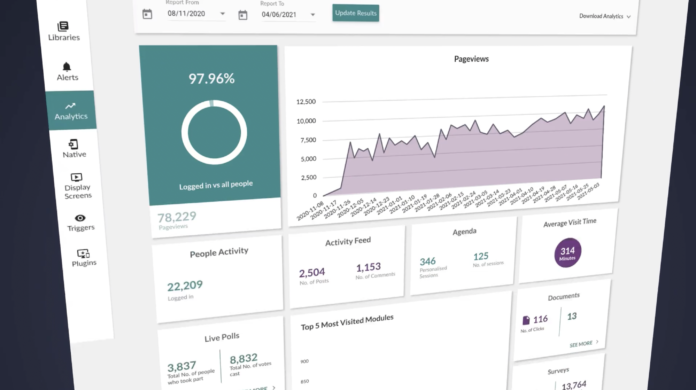
The last set of learnings from CrowdComms’ MD Matt Allen’s workshop at ETL US & Canada – What will Hybrid Events look like in the Future? – matches/forces together all-important shifts in the analytics model with…robots
“Analytics is going to be absolutely critical,” Matt Allen says. “As discussed, we can see we’ve had high viewing numbers, I can tell when someone’s clicked a button to watch a screen, I can tell when people are engaging with the content, I can tell when someone has gone to a sponsor and had that encrypted video call.
“How are we going to make sure that we can capture those same analytics from a hybrid perspective with its mix of in-person and virtual? Should organisers ultimately be looking at individual teams to ensure effective analysis of each component?”
The central element will be defining those two sides of an audience and separating their activity in terms of measuring data to define, or to redefine, success.
“Has anyone thought about using robots to replicate being there in-person?” Matt Allen asks his audience. “You have your face or your avatar and you wander around the room. Is that something people are interested in doing?”
“Just as a pure a gag,” comes one answer. “We have lots of robots and people around so it would be very easy for us to put that together, making them an interactive element.
“I tend to try and dive out of the way of the robots when I see them at events, if I’m honest, but I probably shouldn’t say that as a technology provider…”
Don’t forget Matt’s session on the challenges of virtual event networking – Wednesday 3rd November at Event Tech Live – London. Register Here
Author: Guest Author
This post is by a guest author for eventindustrynews.com If you would like to feature as a guest author please contact us by emailing features@eventindustrynews.com
